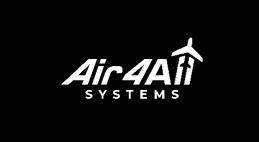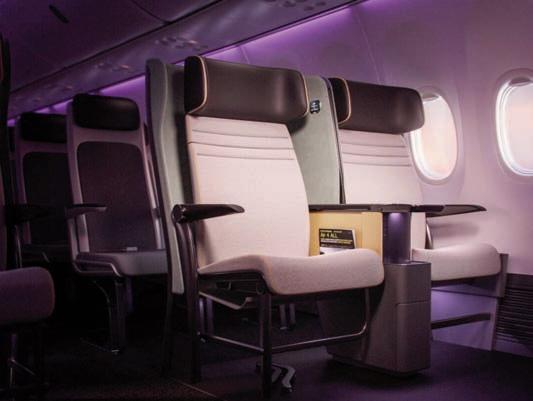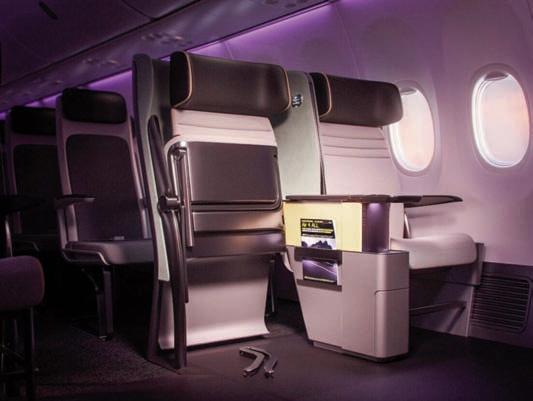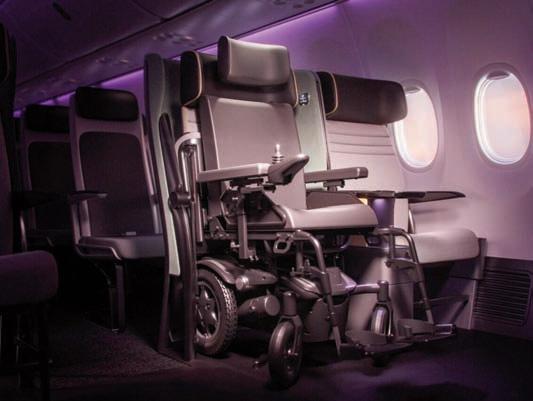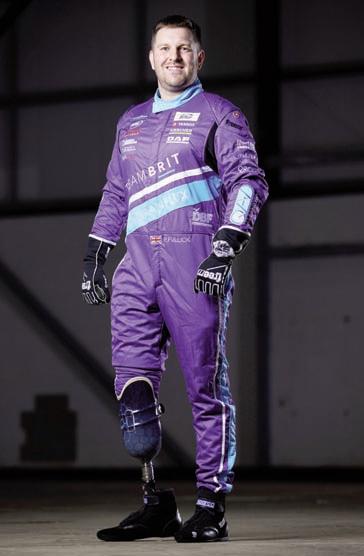
20 minute read
Holidays
It’s not only on the track that the racing community comes together – Team BRIT’s Paul Fullick on leading aid efforts for Ukraine
PAUL FULLICK is a driver for alldisabled Team BRIT. Paul, who is from Southampton, lost part of his leg after being involved in a motorbike accident last year. He joined Team BRIT in late 2021 and this year has competed in the Britcar Trophy Championship. Alongside racing and running his own business, Paul has been doing incredible work to support aid efforts in Ukraine. Here is his story.
Advertisement
I’m a massive fan of teamwork. It sounds cheesy, and it probably is, but if you bring together brilliant people who are good at what they do, and who want to achieve the same thing, stuff gets done.
This has been proven in bucketloads in the work I’ve been doing as part of a newly formed charity to help people affected by the war in Ukraine.
Back at the start of the conflict, I received a message from a friend saying that a group of people were getting together in the local pub to see how they could help get supplies out to Ukraine. They knew I had a lot of experience in logistics so wanted to know if I could help with some advice around transport and what it’s like to drive in Europe. No problem. Fast forward to the end of the meeting and I was in charge of logistics!
In our first run, we took 12 vans out full of crucial supplies. We got to Poland in a day and a half, double crewing vans and driving through the night to get there as promptly as possible.
We took everything from blankets, nappies and toothpaste to canned foods and clothing, and delivered it to an incredible organisation in Poland that then sorted donations to help the thousands of migrants transiting into the country from Ukraine and onward across Europe. It was breath-taking to witness what they were managing to achieve.
Everything was organised in a huge indoor sports hall that was filled with donations from all over the world. It’s difficult to explain just how much was in there, but the demand was so huge that every day it would be completely emptied and the whole process would start again. It needed to be constantly replenished 24 hours a day, 7 days per week.
We knew we needed to keep on helping, so decided we would keep on bringing supplies as long as they needed us.
As more money was coming in and the scale of what we were doing increased, we realised we should become a charity, so Ukraine Sunflower Aid was formed, and I became the chair and a trustee. A great team of people gave up their time to help with admin, accounts, fundraising and logistics.
As we planned each trip, we learnt more, and we realised that the team in Poland had a problem with people donating things they didn’t actually need. Large organisations could get them what they asked for, but it would be slow.
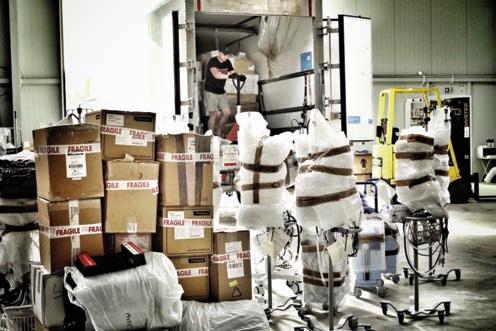
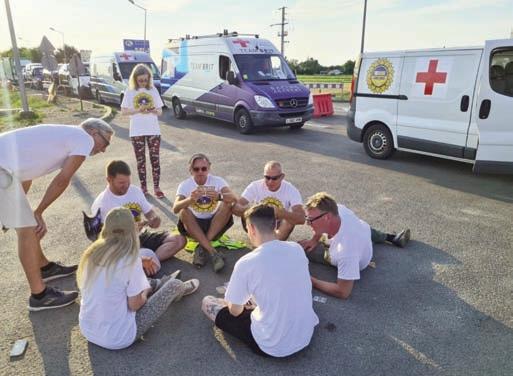
We knew we could move fast, so we began speaking with our contacts regularly, finding out what the urgent need was and getting it to them within a week.
Soon, people were becoming aware of what we were doing and our charity was getting more well known. We teamed up with other charities and formed a collective of people that we trust, setting up really effective flows of supplies.
As the refugee influx slowed in Poland, the need for aid in-land in both Poland and Ukraine stepped up. Hospitals and food banks were in desperate need of supplies.
We therefore got together with a logistics company that brings goods from Poland to UK and agreed that we would pay for their fuel if they would take our aid back to Poland on their homeward run. That became a really good way of getting bulk loads of aid out there, much more than we could manage with our vans.
To keep up the public interest in what we were doing and to remain connected to the work, we also continued with our van runs, which all worked because of the amazing new partnerships we created.
We were contacted by someone buying a refrigerated truck who wanted to take frozen goods out to Ukraine but needed a driver. They now let us use it and we can fill it with medical supplies as well as their food, which we drive out to where it’s needed most. Lately, we’ve also taken large quantities of ventilators out to Ukrainian hospitals.
I’ve been on every single van run to date and it’s really important to me that whilst heading up the logistics, I also play a hands-on role. It’s not easy to see what we do. There’s utter devastation in parts – that’s the nature of a war zone. The trick in dealing with this is to detach yourself from what you’re seeing and focus on why you’re there and the difference it will make to the people on the ground. To date, we’ve delivered 24 tonnes of humanitarian aid via van and over 440 tonnes via HGV. I’ve been so lucky to have received incredible help from Team BRIT. Right from the initial idea, Dave Player was keen to help, instantly lending us a team van for our runs. My fellow driver Chris Overend has also joined me on an aid run, sharing the driving.
My sponsors support me in everything I do, not just my driving for the team. I asked my friends and sponsors at QAV Global for the loan of a van. They didn’t just say yes, they said yes – but they’ll also pay for the fuel, the ferry crossings, the tolls, and they’ll provider a driver! My sponsors Carbon Fibre Tubes didn’t have a van, so they supplied a person! My brother and their chief engineer who joined me on aid runs. In essence, we’ve become a really effective aids logistics company and have a great model for getting supplies from A to B, when they’re needed.
This is the result of the most brilliant teamwork and a perfect example of what happens when the right people with the right goals come together for good.
If anyone would like to help us in our continued efforts, it would be wonderful to receive financial donations via our Just Giving page. (www.justgiving.com/ crowdfunding/ukrainesunfloweraid). This then helps us gather and transport the right supplies at the right time. We set out with the goal of raising a few thousand pounds and sending over one van. We’ve now raised more than £80,000 and it keeps coming. It's amazing what you can do as a team.

Electric Cars: Information and Driver’s Guide
ELECTRIC cars are a great option for lots of people, particularly those who are looking for a modern, eco-friendly and cost-effective vehicle. Because of this, the Motability Scheme provides a wide range of electric vehicles for people to choose from, helping to make them more accessible to disabled people across the UK.
This guide explains everything you need to know about electric cars – from charging solutions and key terminology to some handy FAQs.
Completely new to electric cars?
Unlike petrol & diesel cars which are refuelled at petrol stations, electric vehicles (also known as EVs) plug into a local electricity network. The process works in a similar way to refuelling a petrol or diesel car – one end of the charger simply connects to the vehicle, the other to the electricity source. EVs can be charged at home, at work, at destination networks such as supermarkets and car parks, or via an ever-expanding public network.
There are a few key terms that are used when discussing electric cars: • Range: That’s the distance an electric car can travel (on average) when fully charged • kW: A unit of energy which is used to measure the power of an electric car’s motor. A higher figure indicates a more powerful vehicle –similar to the ‘horsepower’ of a combustion engine. • kWh: A unit which is used to measure the output of an electric car’s battery. The higher the kWh rating of the battery, the greater the car’s range will be. • Charging speeds: How quickly you can charge an electric car using a particular charger. There are a few different charger speed categories, in ascending order: slow, fast, rapid and ultrarapid.
How do electric cars work?
Electric cars get their power from a rechargeable battery, rather than a combustion engine. This means they don’t require fuel or oil, and they produce zero emissions.
The battery is charged by plugging the car into a charge point and drawing electricity from the grid. That electricity then powers an electric motor which turns the wheels. EV motors deliver instant power, and therefore they can accelerate much quicker and feel lighter than petrol-powered cars.
Why choose an electric car?
There are many benefits of choosing an electric car – we’ve outlined some of the most popular reasons below.
Sustainability
The ban on new diesel and petrol cars will come into effect in 2030. It was initially scheduled for 2040 but was moved forwards by the government to help tackle climate change. This means that in the near future, the fossil fuel car ban will see fewer ‘combustion engine’ vehicles on the road and more of their electric counterparts. The move is part of the government’s plan to reduce CO2 emissions and eventually get to ‘net zero’.
Electric cars offer a great solution. Their lower environmental footprint makes them a much greener choice than a petrol or diesel car. It’s worth remembering that this isn’t just a nice added benefit — electric cars are destined to be the only cars on the road in future years. It’s clear that they are a long-term essential, not a short-term trend.
There are already many electric cars on the Motability Scheme, and more manufacturers are coming out with electric and hybrid versions of their bestselling models.
Lower costs
Some drivers can be put off by thinking electric vehicles are too expensive for them, when in reality they can be cheaper to run and maintain than fossil-fuelled cars. One of the biggest reasons for this is the price of fuel: depending on your energy tariff, charging an electric car can cost significantly less than filling up a tank of petrol or diesel. A higher upfront cost may well be compensated by your everyday running costs being lower.
On the topic of upfront costs, one thing that
should be considered is whether to get a home charging point. Home chargers allow you to recharge your car from home, which some people find more convenient than regular trips to the fuel station. For Motability Scheme customers, if you’re leasing your first EV you could get a home charge point installed at no extra cost to you.
A better driving experience
Did you know that almost all electric cars are automatic? This is one reason why people find that they offer a much smoother and more enjoyable driving experience, as opposed to cars with manual transmissions.
They are also very quiet cars, which can be a real bonus. Reduced noise means less distraction for the driver, and a better experience for any sound-sensitive passengers in the car. On top of that, electric cars don’t give out too much noise in busy towns and cities, which is beneficial for both the neighbours and the outside environment in general.
Despite their lack of noise, EVs are still very safe due to the Department for Transport’s sound safety rules for electric cars. All new electric and hybrid cars are fitted with a system that emits a sound when around pedestrians, so that they can hear the vehicles if they are driving nearby. Therefore, you can expect an electric car to provide a smooth and quiet ride, while helping you keep others safe too.
Finding a car
If you’re eligible to join, you can use our Car Search tool on our website to browse the electric cars that are available on the Scheme.
There are also Motability Scheme specialists across the UK, who will be able to answer any questions you may have and help you find the car that best suits your needs. Use our Find a Dealer tool to get the details of your local Motability dealership. For more information visit www.motability .co.uk or telephone 0300 456 4566
Walking stick specialist Classic Canes has launched a new collection of patterned walking sticks and folding canes with an accompanying new trade catalogue for stockists.
Family-run Classic Canes is internationally-renowned for its elegant and stylish walking sticks. The range includes over 700 traditional and contemporary models from everyday wooden walking sticks to exclusive collectors’ and formal canes. The firm is especially well-known for its women’s walking sticks, which transform a practical mobility aid into a fashion accessory.
The latest collection of patterned canes was designed in-house by managing director Charlotte Gillan and features 17 new patterns, designed to reflect the company’s particularly British sense of style. The designs include nature-themed patterns such as hedgehogs, hares, highland cows, puffins and woodpeckers, subtle dragonfly and bee prints, and eye-catching statement patterns such as tropical fruits and rainbows.
“Walking sticks are a great reflection of their user’s sense of style,” explains Charlotte. “For many people, having to use a walking stick becomes much more palatable once they discover that they don’t have to have an ugly
‘hospital-style’ stick but can instead have something fashionable, chic and cheerful.
Once their friends and even total strangers start admiring their stick, they find they can have great fun expressing themselves with different patterns and colours to match different outfits. Some people amass large ‘wardrobes’ of canes and make them their style signature. Even if you only have one, it is so much better for morale if it is of good quality and a pleasure to use.” Classic Canes does not supply the public directly but the Somerset-based firm’s products can be found in mobility stores, garden centres, gift shops, specialist websites and other independent retailers across the UK and in forty countries around the world. Classic Canes is celebrating its fortieth anniversary this autumn, having been launched by Charlotte’s mother Diana Porter in 1982.

Sailing Trilleen
I’M SAILING solo Round Britain and Ireland. That was an entirely impossible objective two years ago. I spent a lot of the previous seven years in a nursing home. I was in such a poor state that I needed 1:1 care, restraint, complex continence support and help with mobility. Most of this related back to a spinal injury and PTSD from an injury in the Royal Navy. My sail is supporting the Andrew Cassell Foundation: the amazing charity helping disabled people achieve independence on the water, who were key to my rehabilitation.
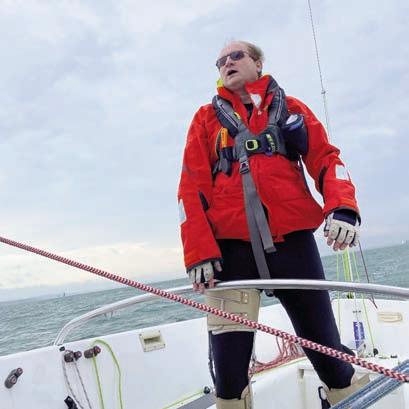
25 years ago I was a fit teenager joining the Royal Navy in its prestigious University Cadet Entrant scheme, looking forward to an Officer’s commission as the sort of engineer who keeps ships floating, moving, and with working sewage plants and other similar services. Unfortunately, all that crumbled to dust within a year as an initially poorly managed low spinal injury left me with mobility and pain issues and bladder and bowels that were distinctly iffy.
By the time I finished my PhD at Southampton University I was struggling with worsening mobility, incontinence and repeated resistant urinary tract infections. The antibiotics and the infections did a number on my mental health. This coupled with the PTSD I was living with started causing aggressive self-harm, dissociation and sleep disorders that included suicide attempts.
Eventually the CHC placed me in an adult nursing home run by Dolphin Homes. It was the best thing that could have happened to me. Initially I was using a power chair, needed one to one care, was frequently restrained, and sometimes soft mechanical restraints. Much of the time I had to wear a full face helmet and sleep in a specialist bed. I also needed massive support emotionally as well as continence care. It wasn’t the best of experiences, but I was safe. It was the careful insight of the nursing team who noticed the link between dissociation, self-harm and infection and slowly we worked out that too much ciprofloxacin (and similar antibiotics) would send me, bluntly, la la. After this, together we started to be able to improve my care and I slowly stabilised and began to recover.
I started thinking about my next move, and the way I could take my rehabilitation further. I wondered whether sailing might be a way forward as it had been an important part of my life before the initial injury. I struggled a bit finding a suitable organisation as many charities seemed set up to offer ‘experiences’ or used sailing to achieve other ends like socialisation. Eventually I came across the Andrew Cassell Foundation and that has transformed my life.
On reading Andy Cassell’s biography, my immediate response was “Finally, here’s a sailor who’s overcome his disability and launched a setup that’s made for me! They’re going to stuff me in an open keelboat, let me trim the sails and feel spray on my face. I was so grateful to them for even giving me a trial in Cowes and hopeful for all that was to come. I was very unfit and didn’t really have any orthotics left that fitted properly so it was a
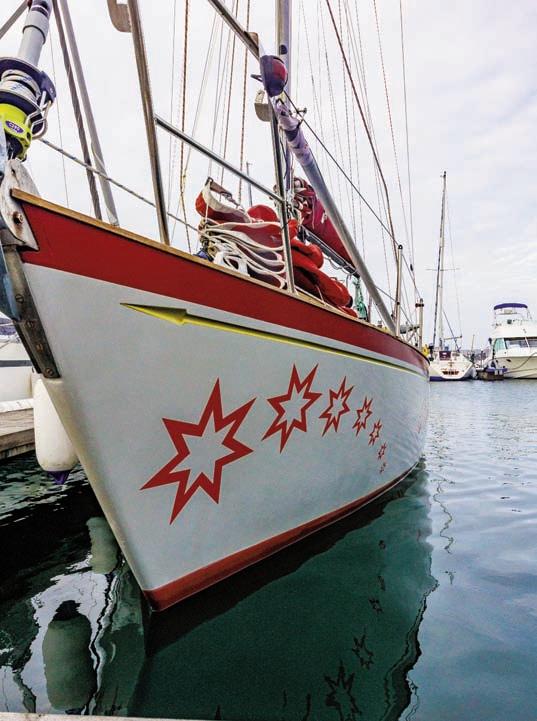
massive challenge. I couldn’t walk the 23 feet length of the Sonar Keelboat the foundation uses and was still using a power chair. People at the sailing club where the Andrew Cassell Foundation is based would look on in amazement as I threw myself almost head first into a boat but gradually, with improved strength and a mountain of determination, I was able to take the helm, and discovered that a lot of the hard won marine skills were still lurking underused in my brain.
Amazingly the Foundation started to see that I had a lot to offer and soon I was being trusted to help some of our newer disabled participants learn and improve their skills. Mind you I used to get so excited, I just couldn’t control my enthusiasm and sometimes fell flat on my face. I’m well over 6ft so it’s a long way down and was always being told to stop acting like a seven year old and slow down.
In May 2020, I bought a small cruising boat which was in a really poor state ashore in the boatyard. Soon renamed Trilleen, the name of a boat built by my great grandparents, she is a modern classic, a Vancouver 27 built the year I was born, 1979. Built to cross oceans she wasn’t at the time safe to float. Together with the continuing sailing and training with the Andrew Cassell Foundation, the refit and systems rebuild she needed was an amazing rehabilitation gym. I launched her in August last year, just before Cowes Week, and subsequently sailed her to learn about sailing solo.
That’s how I came to be starting my sail round the whole of Britain and Ireland. I’m planning to do it slowly stopping frequently, both for my own health and welfare and to talk to as many people about the work the Foundation does and raise funds for them. I’m going so slowly in fact that I’m planning to winter the boat ashore somewhere before resuming the trip in the spring. No one wants to be off the North of Shetland with a small boat in the depths of winter. I’m hugely looking forward to setting off - probably around the 15th of August and setting off on an adventure. I very much hope that it will be a fulfilling voyage with lots of wild places and stimulating sailing.
If you think that sailing might be a way for you to progress with rehabilitation or stimulate your life, please do give the Andrew Cassell Foundation a look. It might do for you, what it’s done for me.
More information about Andrew Cassell Foundation can be found on their website: acfsailing.org or by dropping them an email: info@acfsailing.org
To keep up to date with my sail or to donate to the Crowdfunder go to the Sailing Trilleen website: www.sailingtrilleen.org
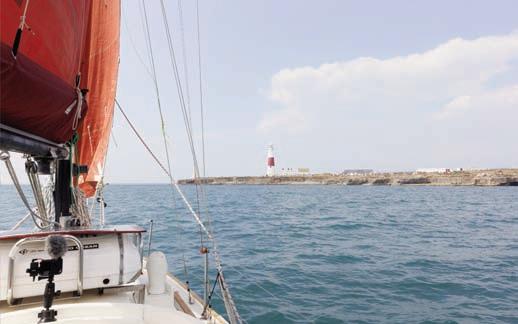
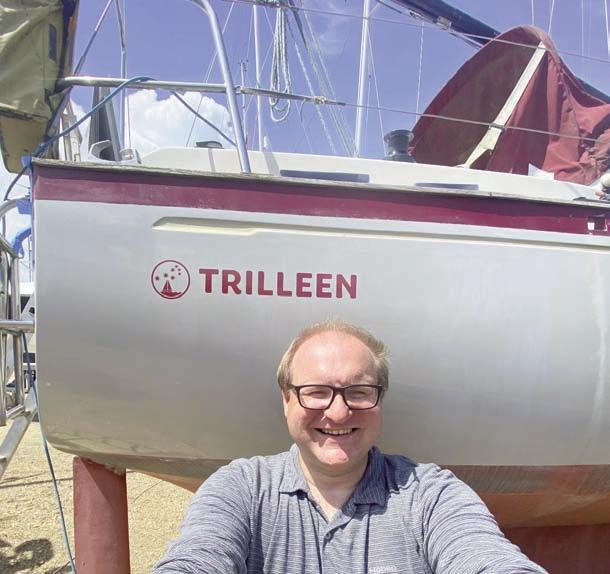
UPDATE
Ian is now round the west coast of Ireland and he and his boat are resting in PORT ELLEN on ISLAY. He intends to proceed to RHU in GLASGOW to meet up with some friendly sailors there and then to winter the boat before beginning his sailing round the remainder of the UK in the spring. The north of SHETLAND is further north than the CAPE OF GOOD HOPE is South and those attitudes demand respect and are best attempted in their respective summers.
Wanna fly in your own wheelchair by air..??...Hold my beer..!!
FLYINGby air seated in your own power wheelchair (PWC) was once a distant dream.
Now an industry led consortium has found the solution to this Rubik’s cube. The consortium comprises of Aircraft Cabin Designer Priestmangoode, Aircraft Certification Company SWS Certification and Lobbyist/Consultant Flying Disabled. The consortium is called Air4All and they want to make air travel safe and dignified for all those that use PWC’s. The consortium will be working alongside Sunrise Medical, one of the biggest wheelchair manufacturers in the world. Working together we can scrutinise the PWC for safety and airworthiness.
The Air4All concept is designed to be accommodated in all commercial aircraft types and has been designed around a single aisle Boing 737 or Airbus A320 aircraft. These aircraft are now the most common airline purchase due to their ability to fly further, thus it can easily migrate to the bigger twin aisles of the air. Jet Blue already flies a Single Aisle Airbus A321neoLR from London to New York.
The Air4All design is not just great for those PWC users, it removes the elephant from the room and offers no loss of passenger seat for the airline. There can be no more excuses from the airline perspective. The consortium is in progressive discussions with an airline subsidiary; in other words the prototype is currently being built with an airline following the progress closely.
However, we need to go further. One airline adopting the Air4All system does not make a harmonised journey. Safety regulators are very keen on harmonisation, especially when it comes to passenger welfare, and it is very likely that once one airline adopts the system then others will follow voluntarily. Then the others will be steered into the stable via regulation. The Civil Aviation Authority (CAA) our UK regulator has thrown its weight behind the project.
The million-dollar/pound/euro question is “will I be able to fly in the PWC I currently use”? That answer has not been established yet. Most PWC’s are tested for road vehicles at a very high standard and on that basis, you would think so, but an aircraft cabin is a vastly different environment. You and your PWC will sit in a pressurised cabin, 35,000 feet in the air, travelling at speeds of around 500mph. The safety of everyone on board cannot be compromised in any way.
So, there are many challenges ahead to get this flying, but as the consortium is industry lead, we know the hurdles that aviation will lay for us, as do Sunrise Medical with all wheelchairs. As someone reminded me, the consortium will be the first of so many innovations that will change so many peoples lives for the better.
I often see on social media “they can get a man on the moon, why can’t airlines get a wheelchair on an aircraft”. Think of the Air4All system as the first manned moon landing; just a few years later they were driving around the moon in buggies, playing golf and all transmitted to viewers in glorious colour. You have start somewhere - right!
For further information visit: www.flyingdisabled.org.uk and www.air4all.net
